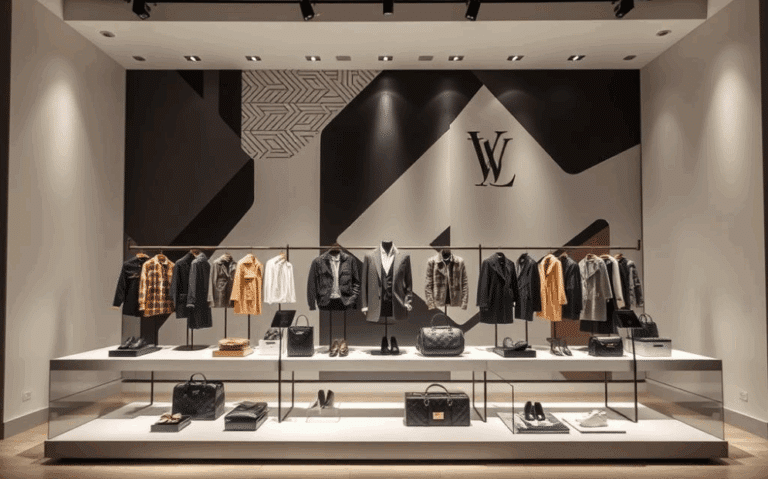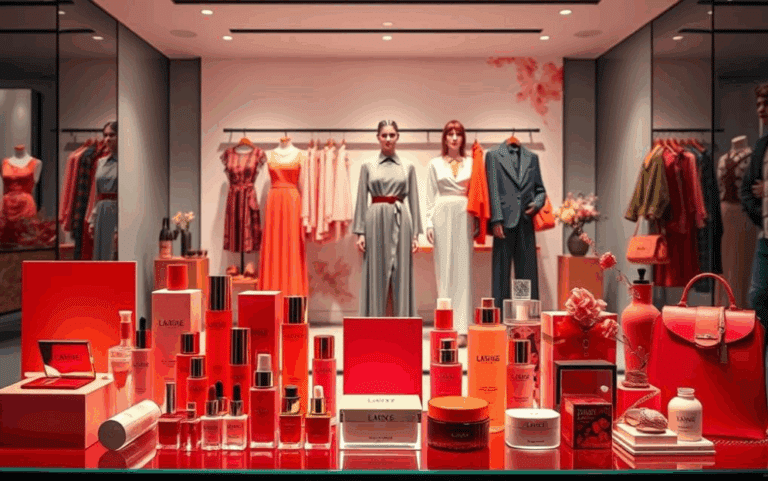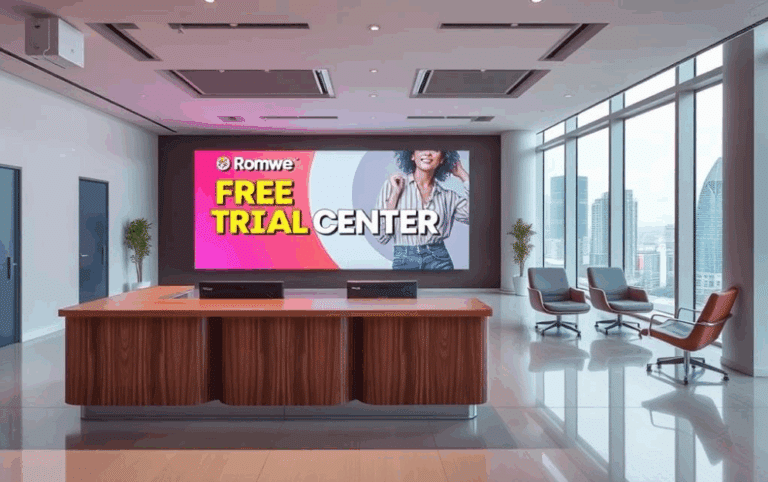Anúncios
What if you could turn your social media presence into a wardrobe upgrade worth thousands? In 2020 alone, one Los Angeles-based company exchanged free apparel for 5,700 Instagram posts through partnerships with 1,182 content creators. The result? A staggering $15.3 million boost in organic publicity.
Founded in 2006 as a single mall store, this brand exploded after embracing Instagram in 2013. By 2024, it amassed 21 million followers on the platform while pioneering a content-first approach. Rather than paying top dollar for celebrity endorsements, they built an army of micro-influencers hungry for trendy outfits.
Their secret? A volume-driven model that prioritizes quantity of posts over individual payouts. While other companies negotiate lengthy contracts, this strategy lets creators choose pieces they genuinely love. The brand ships products directly, transforming everyday users into authentic promoters.
For aspiring influencers in New Zealand, understanding this system could unlock exciting opportunities. We’ll break down exactly how the program works, what metrics matter most, and how to position yourself for success. Ready to turn your feed into a personalized showroom?
Understanding the Rise of Fashion Nova and Influencer Marketing
Los Angeles became the launchpad for a retail revolution when Richard Saghian opened his first store in 2006. Starting in a Panorama Mall boutique, he sold affordable party outfits to local shoppers. Few guessed this small venture would reshape the fast fashion industry.
Early Beginnings and Evolution
Saghian learned the trade at his father’s Los Angeles clothing store before striking out alone. His early focus on bold, budget-friendly designs filled a gap in the market. By 2013, he made a pivotal shift – launching an e-commerce site as Instagram gained traction.
Transition from Traditional Retail to Digital Strategy
The brand abandoned mall-based tactics just as social media became fashion’s main discovery tool. Within five years, they introduced specialized collections for diverse body types and genders. This digital-first approach turned regional shoppers into global customers.
| Year | Focus | Key Move |
|---|---|---|
| 2006 | Physical Retail | First store opens in Los Angeles |
| 2013 | Digital Shift | E-commerce site launches with Instagram integration |
| 2016-2018 | Market Expansion | Curve and Men’s collections debut |
This timeline shows how adapting to digital trends propelled the brand forward. By prioritizing Instagram before competitors, they built lasting connections with style-conscious users worldwide.
Fashion Nova Collaboration: Influencer Marketing in Action
Social media feeds buzzing with #novabeauty posts don’t happen by accident. They’re powered by a precision-tuned content system that turns casual posts into conversion machines. This approach transforms everyday creators into powerful brand ambassadors.

Blueprint for Buzzworthy Content
Specialized hashtags like #novaswim and #fashionnovacurve act as digital filing cabinets. Each tag organizes posts by product type, helping customers find matching swimwear or plus-size outfits effortlessly. Creators simply add the magnifying glass emoji 🔍 plus exact item names – turning casual selfies into shoppable moments.
Real People, Real Results
A recent menswear campaign achieved 570,000 interactions through genuine storytelling. Partners shared personal styling tips using #fashionnovamen items, blending product highlights with authentic lifestyle content. This strategy generated 10 million impressions at a 9.8% engagement rate – nearly triple industry standards.
The secret sauce? Clear guidelines that remove guesswork. Creators tag @fashionnova, use specified hashtags, and keep captions conversational. This system lets the brand repurpose top-performing posts across email campaigns and website banners, multiplying each creator’s impact.
Case Study Insights: Free Clothing and Brand Growth
How do brands balance explosive launches with everyday growth? The answer lies in contrasting approaches to partnerships. Let’s examine how different creator tiers drive measurable results.
Real-life Examples from Influencer Posts
A 2020 celebrity collection sold $1.2 million worth of apparel in one day through limited-edition drops. Meanwhile, micro-creators generated 570,000 interactions on a menswear campaign using authentic try-on videos. Both strategies worked – but through different mechanisms.
Impact on Customer Engagement and Social Proof
Daily posts from smaller creators create a perception of popularity. When hundreds of users wear the same jeans in varied settings, it signals trendiness. Campaign metrics show 9.8% engagement rates when posts blend styling tips with personal stories.
Comparing Micro-Influencer Tactics vs. Celebrity Endorsements
High-profile partnerships generate media buzz, while grassroots content builds trust. The table below shows how these methods complement each other:
| Factor | Celebrity Campaigns | Micro-Creator Efforts |
|---|---|---|
| Sales Impact | $1M+ in 24 hours | Steady 3-5% conversion lift |
| Content Lifespan | 2-3 week news cycle | 6+ months search visibility |
| Audience Trust | 18% purchase intent | 34% “real people” appeal |
This dual strategy lets brands dominate headlines while maintaining daily relevance. Smaller creators accept clothing gifts instead of fees, valuing exposure to the company’s 21-million follower network.
Strategies for Building Successful Influencer Partnerships
Scaling influencer partnerships demands precision tools and mutual value. Modern brands manage thousands of relationships through automated systems that streamline outreach and performance tracking. This approach removes guesswork while maintaining personalization at scale.
Smart Outreach Through Technology
Platforms like SARAL revolutionized creator management with three key features:
- Email sequences targeting 500+ prospects weekly
- Real-time tracking of branded hashtags
- Auto-reminders for campaign deadlines
These tools help brands identify engaged creators organically. Instead of cash payments, partners receive store credits – reducing financial risks while ensuring authentic product promotion.
| Approach | Traditional | Automated |
|---|---|---|
| Scale | 10-20 creators | 1,000+ partners |
| Payment Method | Wire transfers | Product credits |
| Content Control | Custom contracts | Standardized guidelines |
Win-Win Value Exchange
Creators gain early access to trending styles and exposure to massive audiences. One Los Angeles-based beauty partner grew her following by 218% in six months through consistent tagging.
Brands benefit from diverse content showing products in real-life settings. This strategy generates 12x more usable assets than traditional photo shoots while reflecting actual customer experiences.
Conclusion
When every social post becomes a potential billboard, content transforms into currency. The Los Angeles-based apparel giant’s strategy proves that relatable storytelling outperforms polished ads. By empowering everyday creators, they’ve built a self-sustaining marketing engine that fuels continuous growth.
Their approach reshaped industry standards. Over 1,000 micro-partners now generate authentic social proof daily, driving 34% higher trust than celebrity campaigns. This model thrives on volume – hundreds of real people showcasing products in diverse settings.
For New Zealand creators, success lies in mastering branded hashtags and styling versatility. Align your aesthetic with the company’s bold identity while adding personal flair. Track which posts get repurposed on their website or email blasts to refine your strategy.
The beauty line expansion shows how this system scales across product categories. Brands worldwide now prioritize grassroots content over traditional ads, proving that customer-driven marketing creates lasting connections. Your feed could be the next digital showroom – if you learn to speak the language of modern influence.
FAQ
How does the brand partner with creators for free apparel?
The company uses a structured hashtag system like #NovaBabe or #NovaMen, allowing influencers to apply for campaigns. Selected creators receive free items in exchange for authentic posts that align with their aesthetic, driving engagement.
What makes micro-influencers effective for fast-fashion brands?
Micro-influencers often have higher audience trust and niche followings compared to celebrities. Their relatable content generates stronger social proof, which boosts conversion rates for brands focused on trendy, affordable apparel.
Has the brand faced criticism for its fast-fashion model?
Yes, like many in the industry, it has been scrutinized for sustainability practices. However, its agile supply chain and influencer-driven marketing help maintain relevance while addressing shifting consumer demands.
Who founded the company, and how did it grow?
Richard Saghian launched the brand in 2006, initially focusing on Los Angeles retail. By pivoting to digital and leveraging Instagram creators, it became a leader in fast-fashion through rapid trend replication and influencer collaborations.
What are best practices for creators seeking partnerships?
Consistently tag the brand in high-quality posts, showcase versatility with styles like swimwear or beauty looks, and engage audiences through stories or reels. Tools like SARAL streamline outreach and campaign tracking.
How does user-generated content impact customer behavior?
UGC from influencers acts as social proof, making shoppers 3x more likely to purchase. Real-life try-ons and styling tips posted by creators reduce hesitation, especially for new arrivals or limited-edition lines.
Which product categories perform best in collaborations?
Swimwear, curve-hugging dresses, and seasonal collections often trend due to their visual appeal. Beauty accessories and Nova Men’s streetwear have also gained traction through targeted creator campaigns.
How does the brand measure campaign success?
Metrics include engagement rates, UGC repurposing potential, and sales linked to creator codes. Automated tools track hashtag performance and audience sentiment across platforms.
Do influencers retain rights to their sponsored content?
Agreements vary, but many campaigns allow the brand to repurpose posts for website galleries or ads. Creators typically maintain ownership while granting non-exclusive usage rights.
What differentiates its strategy from traditional retail?
Instead of relying on celebrity endorsements, the brand prioritizes real-time feedback from creators and customers. This data-driven approach fuels rapid design updates and inventory adjustments.




